Genuine Raja Yoga as Told by Patanjali – Ashtanga@Samhitha
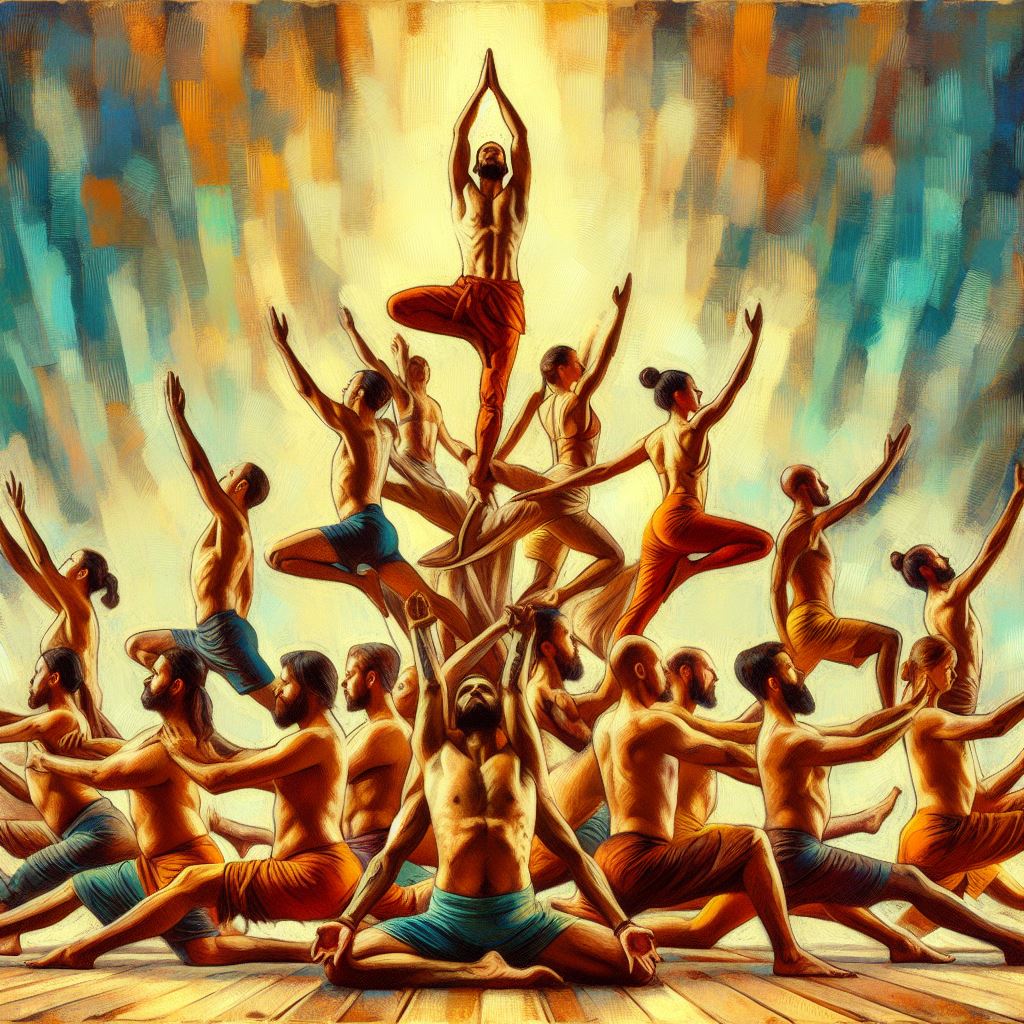
Raja Yoga as defined by Patanjali
Rāja Yoga, also known as Ashtanga Yoga, is a profound system of spiritual practice outlined by the great Sage Patanjali in his revered text, the Yoga Sutras. Let’s explore its essence.
Eight Limbs of Rāja Yoga
Ashtanga Yoga can be divided into eight limbs (ashta = eight, anga = limbs). These limbs serve as a comprehensive guide for practitioners seeking self-realization.
The eight limbs are:
Yamas: Ethical principles that guide our behavior toward others.
Niyamas: Personal observances that cultivate inner discipline.
Āsanas: Physical postures that promote strength, flexibility, and balance.
Prāṇāyāma: Breath control techniques to regulate life force energy.
Pratyāhāra: Withdrawal of the senses from external distractions.
Dhāraṇā: Concentration, focusing the mind on a single point.
Dhyāna: Meditation, where the mind merges with the chosen object of contemplation.
Samādhi: The ultimate state of blissful absorption, transcending individual identity.
Goal of Rāja Yoga
Rāja Yoga aims to control the fluctuations of the mind (chitta vrittis) and lead the practitioner toward super-consciousness.
By diligently practicing the eight limbs, one attains inner peace, self-awareness, and union with the universal consciousness.
Historical Context
In ancient times, Rāja Yoga represented the pinnacle of yogic practice, leading to samadhi (profound meditative absorption).
Swami Vivekananda popularized Rāja Yoga in the 19th century, equating it with Patanjali’s Yoga Sutras.
Today, Rāja Yoga remains a timeless path for seekers, inviting them to explore the depths of their own being.
Rāja Yoga is not merely physical exercise; it is a transformative journey toward self-realization and spiritual awakening.
For further information, please see the content below. We provide classes, sessions, and demonstrations in the Yoga Method as defined by Patanjali.
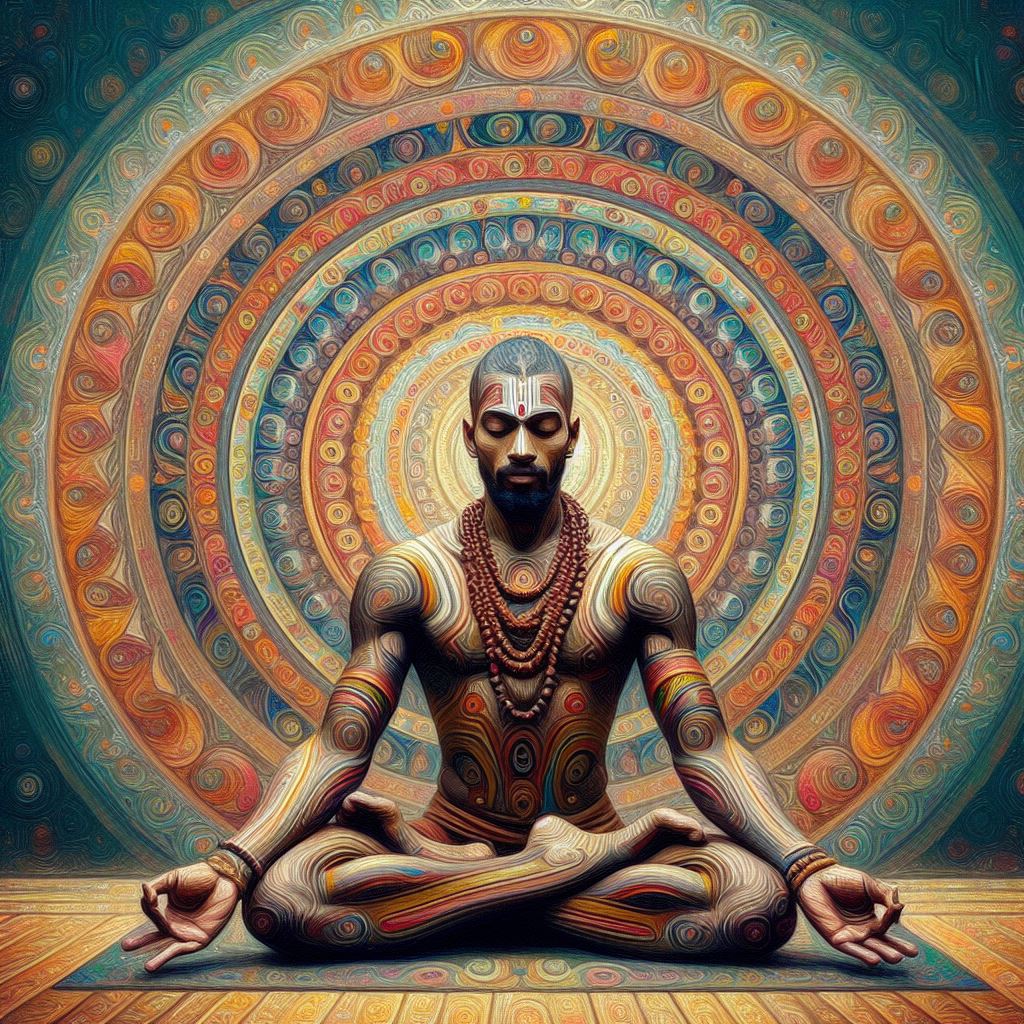
Yama (Ethical Restraints)
In Ashtanga yoga, the first limb, Yama, serves as the ethical foundation guiding practitioners toward harmonious living. Yama consists of five moral disciplines, providing a framework for interactions with oneself and others. These principles include Ahimsa (non-violence), urging practitioners to cultivate compassion and kindness toward all beings; Satya (truthfulness), encouraging honesty and integrity in thoughts, words, and actions; Asteya (non-stealing), promoting respect for others’ possessions and ideas; Brahmacharya (moderation), advocating for the responsible use of energy and resources; and Aparigraha (non-greed), emphasizing detachment from material desires and possessions. Through the practice of Yama, Ashtanga yogis cultivate a balanced and virtuous approach to life, fostering inner peace and harmony within themselves and their surroundings.
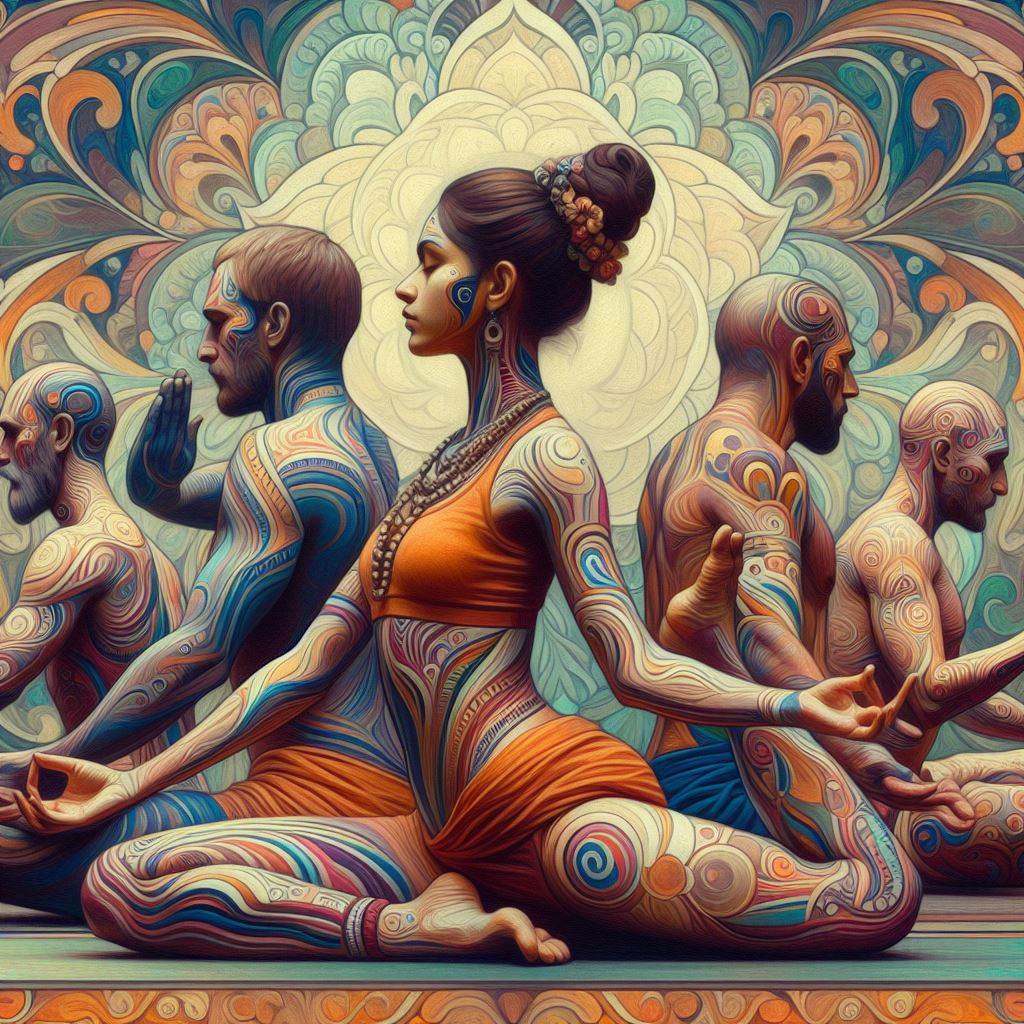
Niyama (Observances)
In the holistic system of Ashtanga yoga, Niyama, the second limb, comprises personal observances that support the journey toward self-discipline and inner refinement. Niyama consists of five essential practices that encourage self-care and spiritual development. These include Saucha (cleanliness), which extends beyond physical hygiene to include purity of mind and environment; Santosha (contentment), fostering gratitude and acceptance of one’s present circumstances; Tapas (self-discipline), promoting perseverance and dedication to spiritual growth through rigorous practice; Svadhyaya (self-study), the pursuit of self-awareness through the study of sacred texts, introspection, and reflection; and Ishvara Pranidhana (surrender to the divine), cultivating trust in a higher power and aligning one’s actions with a greater universal purpose. Through the diligent practice of Niyama, Ashtanga yogis nurture a deeper connection with themselves and the divine, leading to a life of greater fulfillment and spiritual awakening.
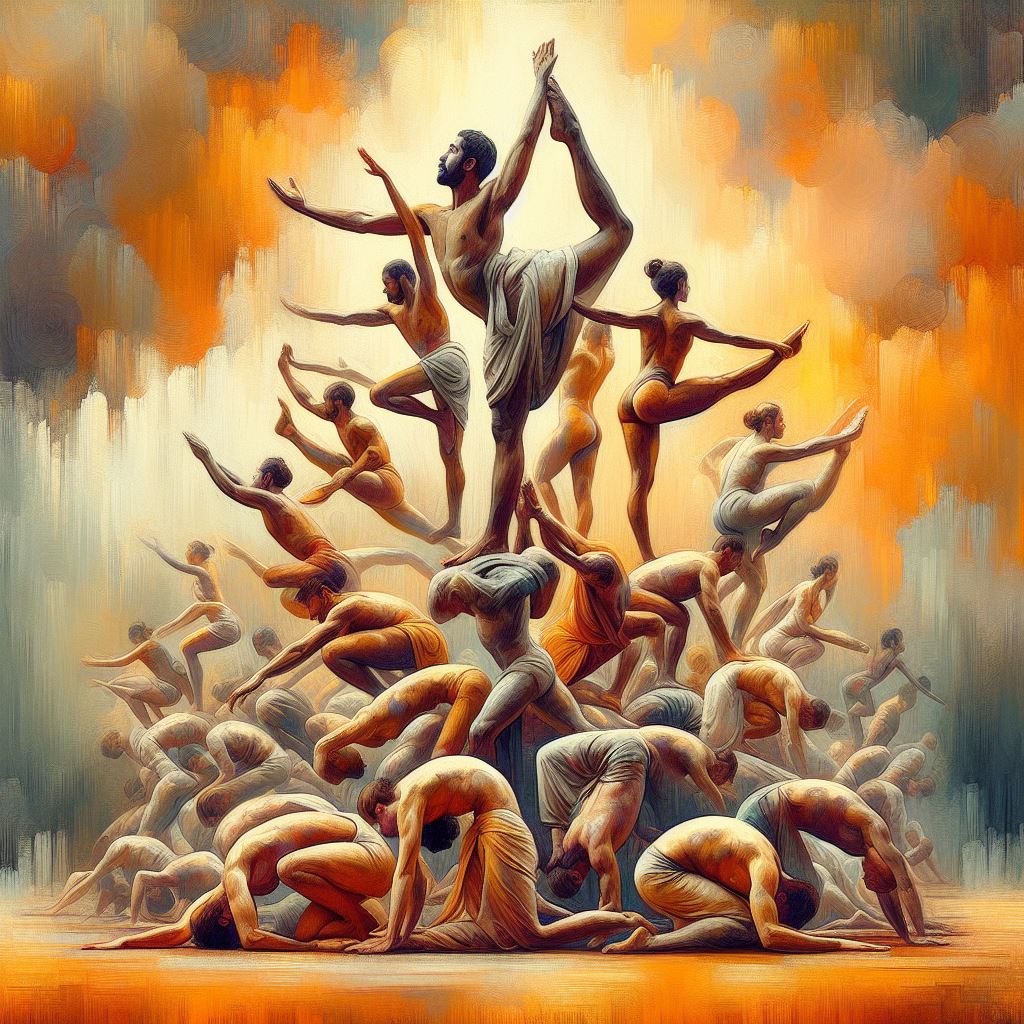
Asana (Physical Postures)
Asana, the third limb of Ashtanga yoga, refers to the practice of physical postures designed to promote strength, flexibility, and balance in the body. In Ashtanga yoga, the asana practice follows a specific sequence of poses that systematically purify and strengthen the body while calming the mind. This structured approach allows practitioners to gradually advance through a series of poses, synchronizing breath with movement in a flowing, meditative rhythm. The practice of asana not only enhances physical health and vitality but also serves as a gateway to deeper states of concentration and meditation. Through consistent and mindful practice, Ashtanga yogis cultivate a sense of inner harmony and presence, preparing the body and mind for the profound transformative practices that lie ahead on the yogic path.

Pranayama (Breath Control)
Pranayama, the fourth limb of Ashtanga yoga, encompasses various breathing techniques aimed at regulating and controlling the breath to cultivate prana, or life force energy. In this practice, practitioners learn to deepen and extend their breath, exploring the relationship between the breath, body, and mind. Through specific techniques such as Ujjayi breath (victorious breath), Kapalabhati (skull shining breath), and Nadi Shodhana (alternate nostril breathing), practitioners refine their breath awareness and develop the capacity to influence their physiological and mental states. Pranayama practice not only enhances respiratory function and vitality but also calms the mind, preparing it for deeper states of meditation and self-awareness. By harnessing the power of the breath, Ashtanga yogis cultivate a profound sense of presence and connection to the subtle energy within themselves and the universe.
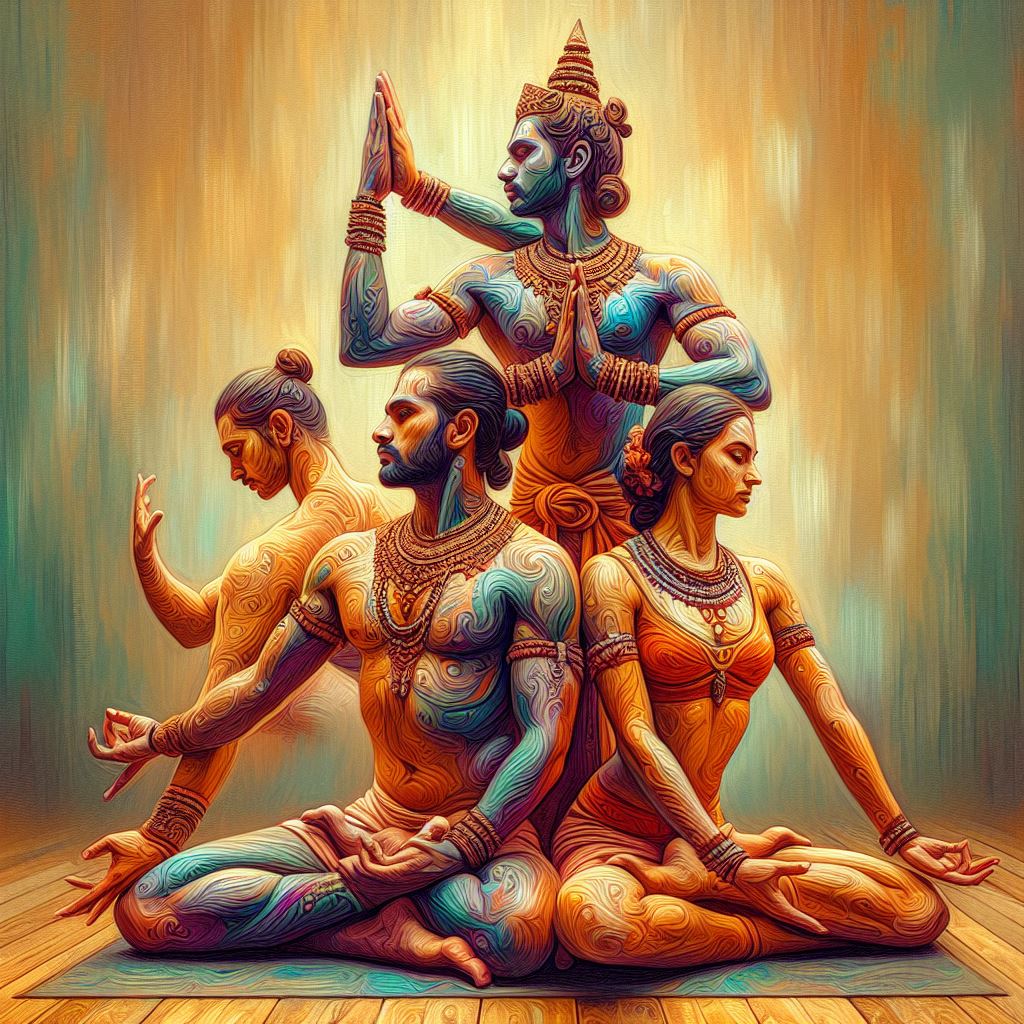
Pratyahara (Withdrawal of the Senses)
Pratyahara, the fifth limb of Ashtanga yoga, involves the withdrawal or control of the senses from their external objects. In this stage, practitioners learn to redirect their attention inward, dissociating from the distractions of the external world. Through various practices such as meditation, breath awareness, and sensory withdrawal techniques, practitioners gradually cultivate a heightened sense of inner awareness and focus. Pratyahara serves as a crucial bridge between the external practices of asana and pranayama and the internal practices of concentration and meditation. By mastering pratyahara, Ashtanga yogis gain greater control over their minds, enabling them to delve deeper into the inner realms of consciousness and self-realization.
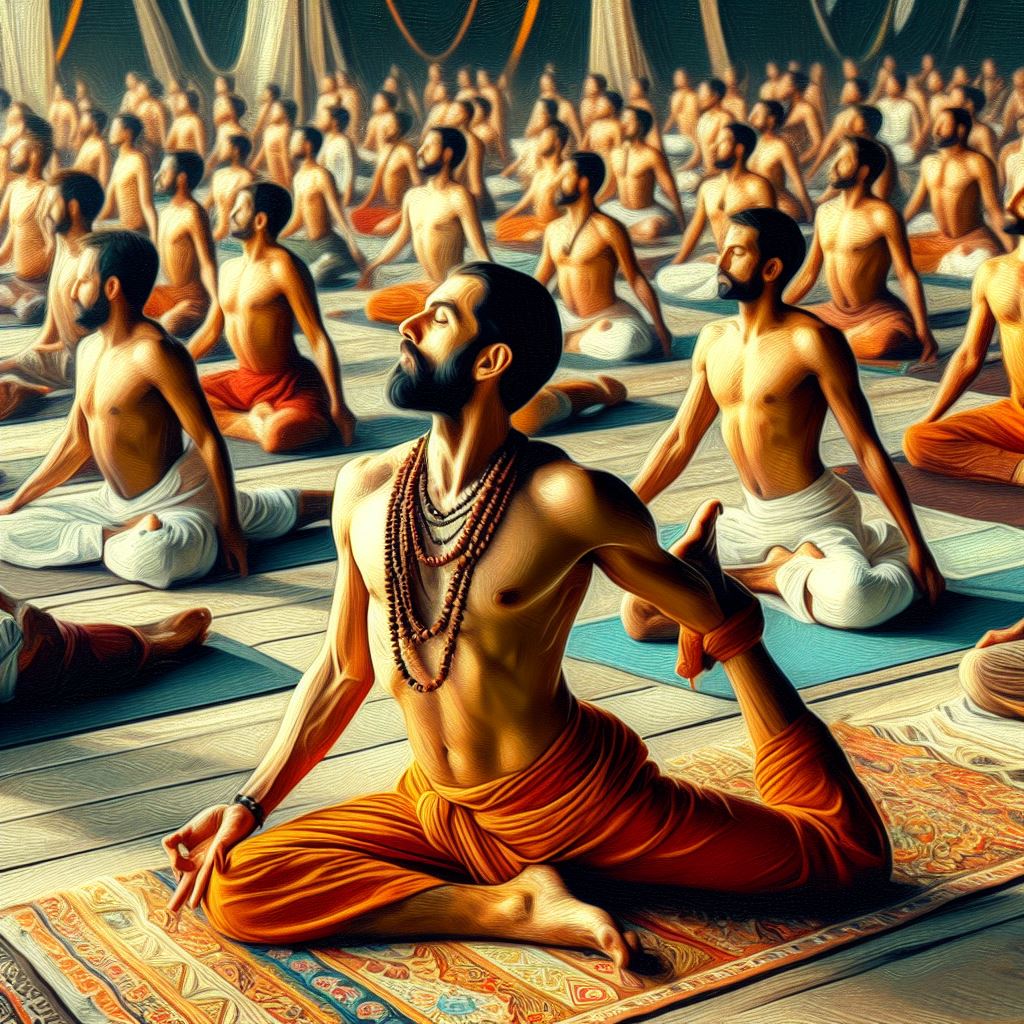
Dharana (Concentration)
Dharana, the sixth limb of Ashtanga yoga, refers to the practice of concentration or single-pointed focus. In this stage, practitioners refine their ability to direct and sustain their attention on a chosen object or point of focus, such as the breath, a mantra, or an image. By training the mind to remain steady and undistracted, dharana cultivates mental clarity, stability, and inner strength. Through regular practice, Ashtanga yogis develop the capacity to quiet the fluctuations of the mind and enter into deeper states of meditative absorption. Dharana serves as a vital preparation for the practice of dhyana (meditation), paving the way for profound experiences of inner peace, insight, and self-realization.
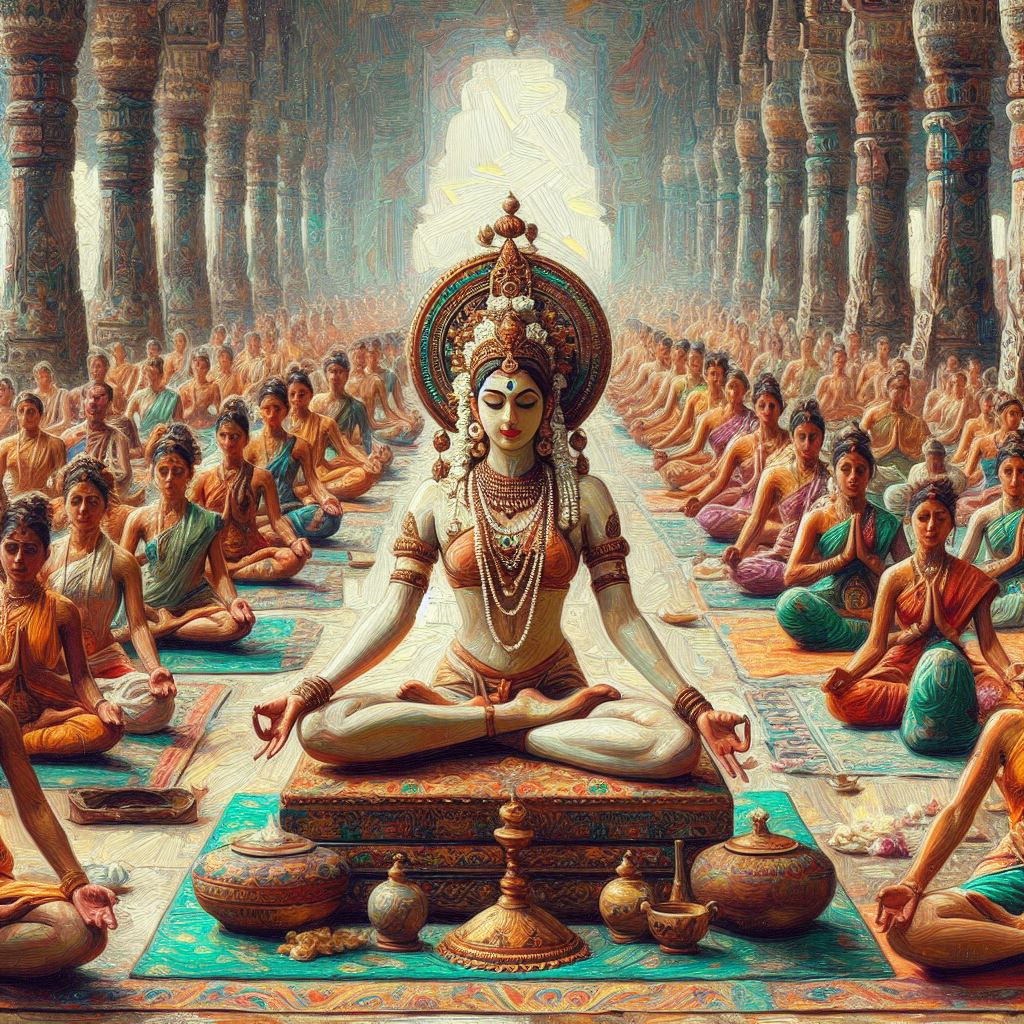
Dhyana (Meditation)
Dhyana, the seventh limb of Ashtanga yoga, represents the state of meditation or sustained contemplation. In this stage, practitioners cultivate a deep and uninterrupted flow of awareness, allowing the mind to rest in a state of quietude and clarity. Dhyana transcends the boundaries of ordinary perception, as practitioners immerse themselves fully in the present moment, free from the distractions of the external world. Through the practice of dhyana, Ashtanga yogis experience a profound sense of inner peace, insight, and unity with the universal consciousness. This state of meditative absorption enables practitioners to explore the depths of their being and access higher states of consciousness, leading to profound spiritual transformation and self-realization.

Samadhi (Absorption or Enlightenment)
In Ashtanga yoga, Samadhi represents the ultimate culmination of the yogic journey, often described as a state of profound spiritual realization and union with the divine. It is the eighth and final limb of Ashtanga yoga, representing the pinnacle of human consciousness and enlightenment. In Samadhi, the individual transcends the limitations of the ego and merges with the universal consciousness, experiencing a state of pure awareness and bliss. This state is characterized by a profound sense of unity, peace, and interconnectedness, where the distinction between the self and the universe dissolves. While Samadhi is often described as the goal of yoga, it is also seen as a continuous and ever-deepening process of spiritual evolution, marking the culmination of dedicated practice, self-inquiry, and surrender to the divine.
